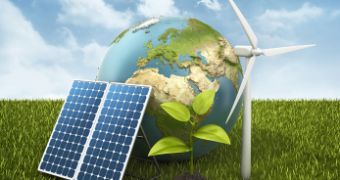The European Union has promised that, by the year 2050, the greenhouse gas emissions of its member states will be reduced by 80% to 95%. However, it would appear that, if this goal is to be achieved, the Union must hurry up and implement a plan for the development of the green energy industry.
The European Wind Energy Association explains that, under present trends and policies, the European Union is sure to fail to reduce its greenhouse gas emissions by said amount when compared to 1990 levels by 2050.
Thus, the Association claims that, although emissions have high chances to be reduced by 24% by the year 2020, a drop of just 44% will be achieved over the following three decades.
Besides, it is said that, within this time frame, the European Union's dependence on energy imports will up by about 57%, Click Green tells us.
The Wind Energy Association explains that, all things considered, member states might still have a chance of meeting their climate change targets, provided that a plan for the development of the green energy industry is also set in place.
This plan would not only yield major environmental benefits, but would also help improve on the European Union's energy security.
“With the EU's power sector expected to be still pumping out almost 400 million tonnes of CO2 annually by 2050, and the EU in an even worse energy security situation, an ambitious 2030 climate and energy framework, with targets for renewable energy and GHG reductions, is more critical than ever,” argues the Association's current Deputy CEO, Justin Wilkes.
“Without such targets energy security and a zero-carbon power sector will be impossible,” he adds.
According to a report published by the European Commission during last year's Christmas break, current trends and policies have high chances to translate into the installation of quite a lot of green energy generation capacity over the following years.
Thus, the report predicts that, of the new electricity generating installations set in place over the 20-year period to 2035, 59% will harvest renewables. Wind is expected to account for 37%, and will probably become Europe's leading power generating technology by 2040.

 14 DAY TRIAL //
14 DAY TRIAL //